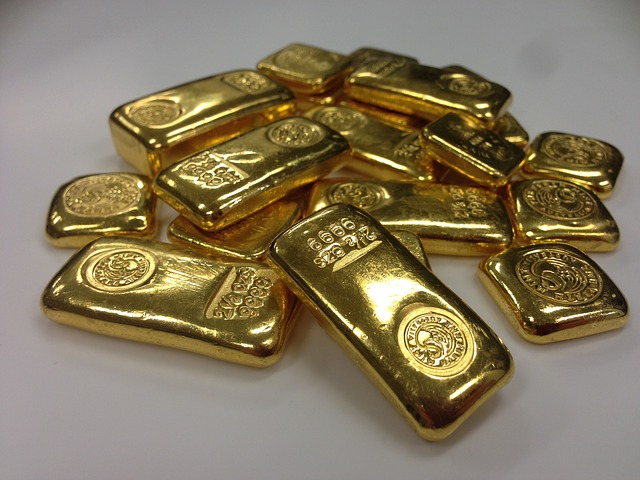In the world of investing, there’s an age-old saying that goes, “Don’t put all your eggs in one basket.” Diversification is the key to building a strong and resilient investment portfolio. While stocks, bonds, and real estate have long been the go-to options for investors, another shining star has consistently held its ground throughout history: gold. Renowned for its intrinsic value and timeless allure, gold has been a symbol of wealth and prosperity for centuries. In this blog post, we’ll delve into the world of investing in gold, exploring its unique characteristics, different forms of investment, potential benefits, and essential tips for those looking to unlock wealth through this precious metal.
The Allure of Gold
Gold’s enduring appeal as an investment can be traced back to its inherent qualities. Unlike paper currencies, which can be prone to devaluation due to economic uncertainties and government policies, gold maintains its value over time. It’s a tangible asset with the intrinsic worth that transcends borders, making it a universal store of value. Additionally, gold has a limited supply, which further enhances its allure. As the global economy fluctuates, gold tends to retain its value, acting as a hedge against inflation and economic instability.
Forms of Gold Investment
Investing in gold can take various forms, each with its own set of advantages and considerations:
- Physical Gold: Owning physical gold in the form of coins, bars, or jewelry is a classic way to invest. This tangible asset can be stored at home or in a secure vault. While physical ownership provides a sense of security, it also requires safe storage and insurance considerations.
- Gold ETFs (Exchange-Traded Funds): Gold ETFs offer a convenient way to invest in gold without the hassle of storing physical metal. These funds track the price of gold and can be traded on stock exchanges, providing liquidity and flexibility to investors.
- Gold Mining Stocks: Investing in companies that mine gold can provide exposure to the metal’s potential price appreciation. However, mining stocks can be influenced by factors beyond gold prices, such as company management and geopolitical issues.
- Gold Mutual Funds: Mutual funds that focus on gold-related assets provide diversification across multiple gold investments, including physical gold, mining stocks, and other related securities.
- Gold Futures and Options: For more experienced investors, gold futures and options contracts allow for speculation on the future price of gold. These derivatives can be highly leveraged and come with significant risk.
Benefits of Investing in Gold
- Diversification: Adding gold to your investment portfolio can help reduce risk and enhance diversification. Its performance often behaves differently from traditional assets like stocks and bonds, which can provide stability during market turbulence.
- Inflation Hedge: Gold has historically served as an effective hedge against inflation. As the cost of living rises, the value of gold tends to increase, helping to preserve your purchasing power.
- Global Acceptance: Gold is recognized and valued worldwide. Its universal appeal makes it a trusted form of wealth that can be easily exchanged or traded in any part of the globe.
- Wealth Preservation: Throughout history, gold has maintained its value and purchasing power. It can act as a form of insurance during times of economic uncertainty or geopolitical turmoil.

Tips for Starting Your Gold Investment Journey
- Educate Yourself: Before diving into a gold investment, take the time to understand its dynamics, historical performance, and various forms of investment. Knowledge is key to making informed decisions.
- Set Clear Goals: Determine your investment objectives and risk tolerance. Are you looking for short-term gains or long-term wealth preservation? Having clear goals will help shape your investment strategy.
- Allocate Wisely: Consider how much of your overall portfolio you want to allocate to gold. Diversification is important, so ensure that your gold investment complements your existing assets.
- Choose the Right Form: Select the form of gold investment that aligns with your goals and preferences. Whether it’s physical gold, ETFs, or mining stocks, each option has its own pros and cons.
- Stay Informed: Keep an eye on economic and geopolitical developments that could impact the price of gold. Market trends, interest rates, and geopolitical tensions can all influence its value.
- Long-Term Perspective: Gold investment should generally be approached with a long-term perspective. While short-term fluctuations are common, the true value of gold often emerges over time.
Conclusion
Investing in gold is a pathway to unlocking wealth and enhancing the resilience of your investment portfolio. Its unique characteristics, including intrinsic value, global recognition, and historical appeal, make it a compelling choice for both novice and seasoned investors. By diversifying your investment portfolio with gold, you can mitigate risk, hedge against inflation, and preserve your wealth over the long term. As you embark on your gold investment journey, remember to educate yourself, set clear goals, and choose the right investment form to suit your financial aspirations. With careful planning and a long-term perspective, you can harness the power of gold to unlock a brighter financial future. For more articles, information, and resources on precious metals ira, check out their page to learn more.





